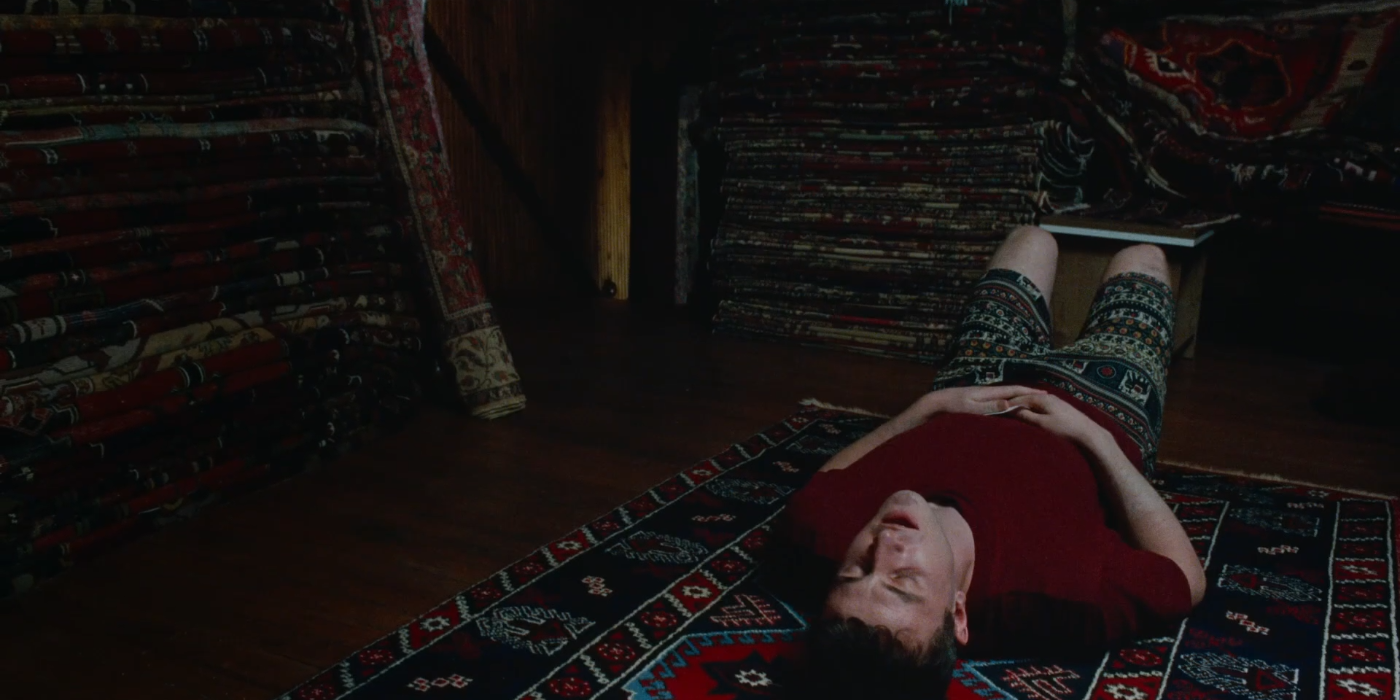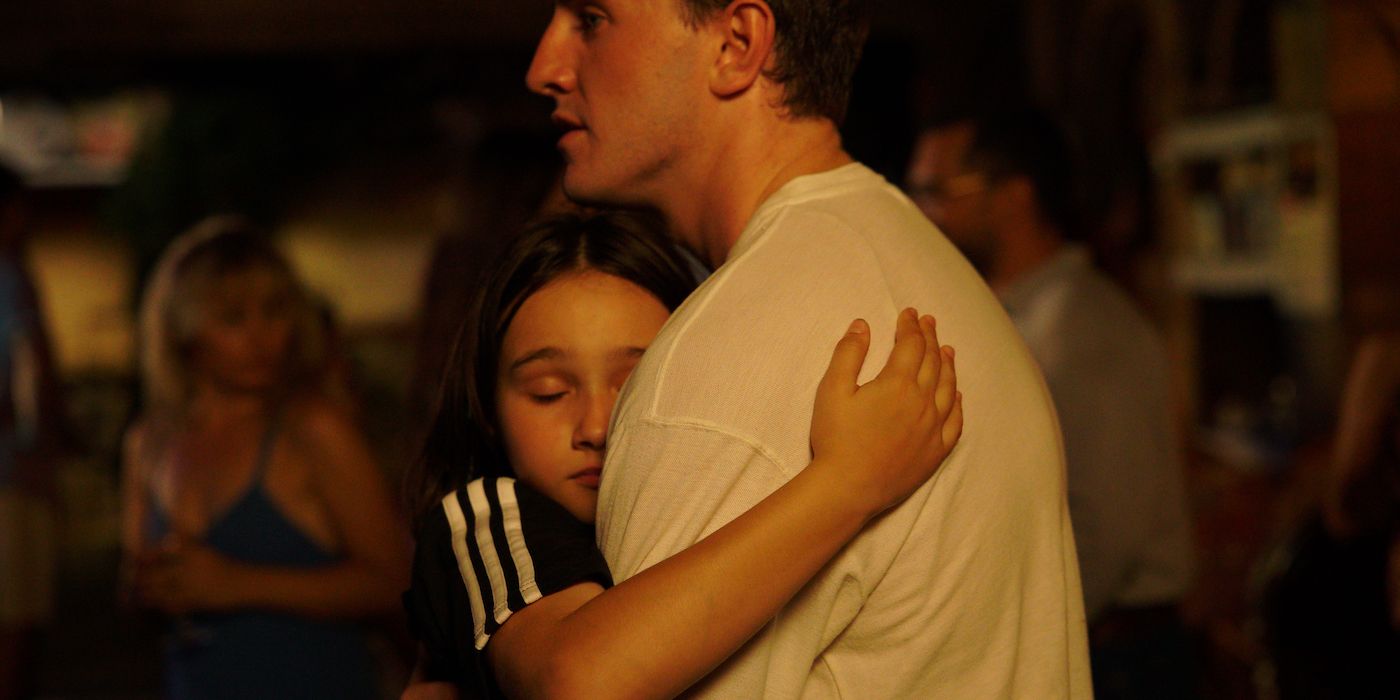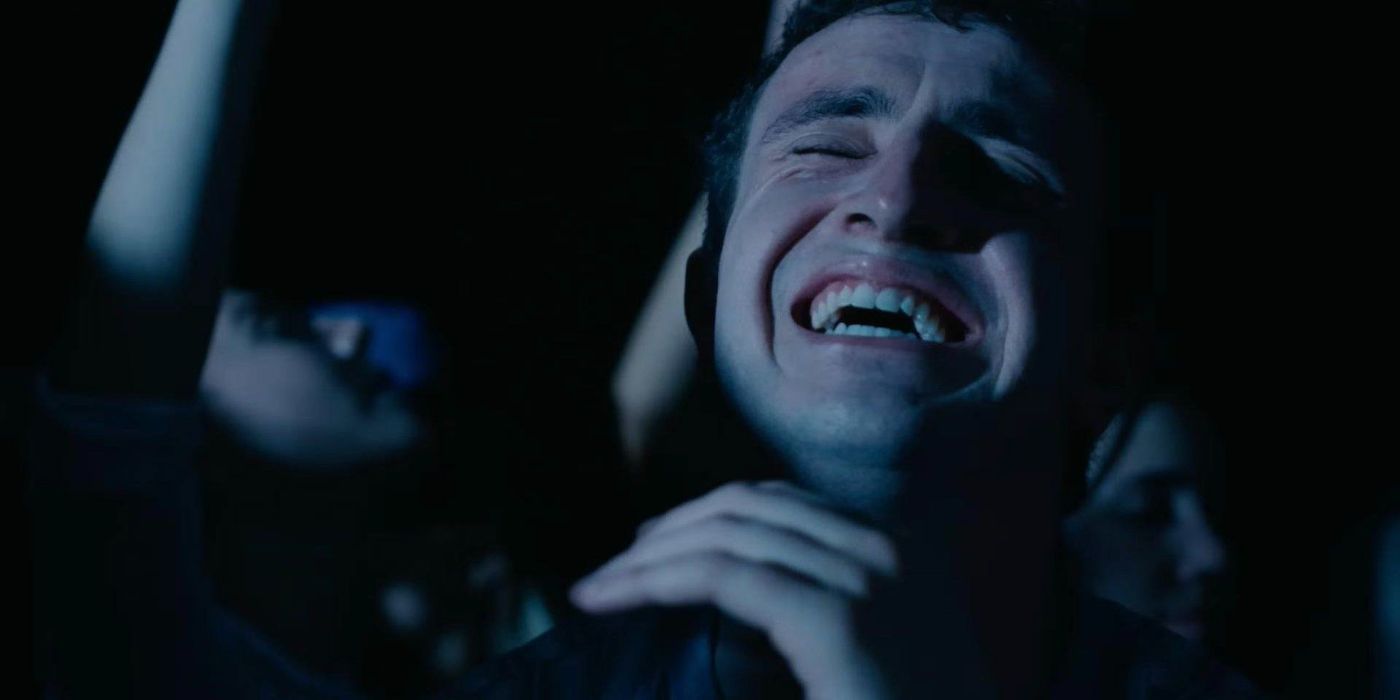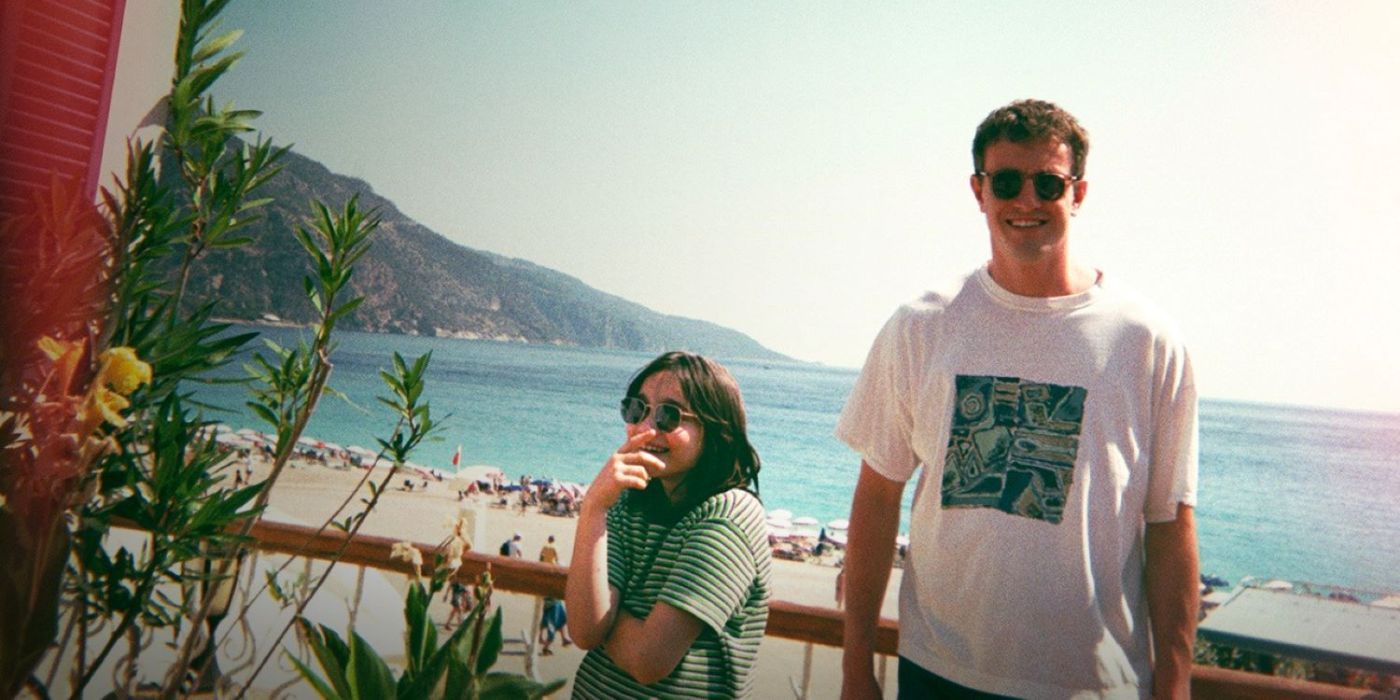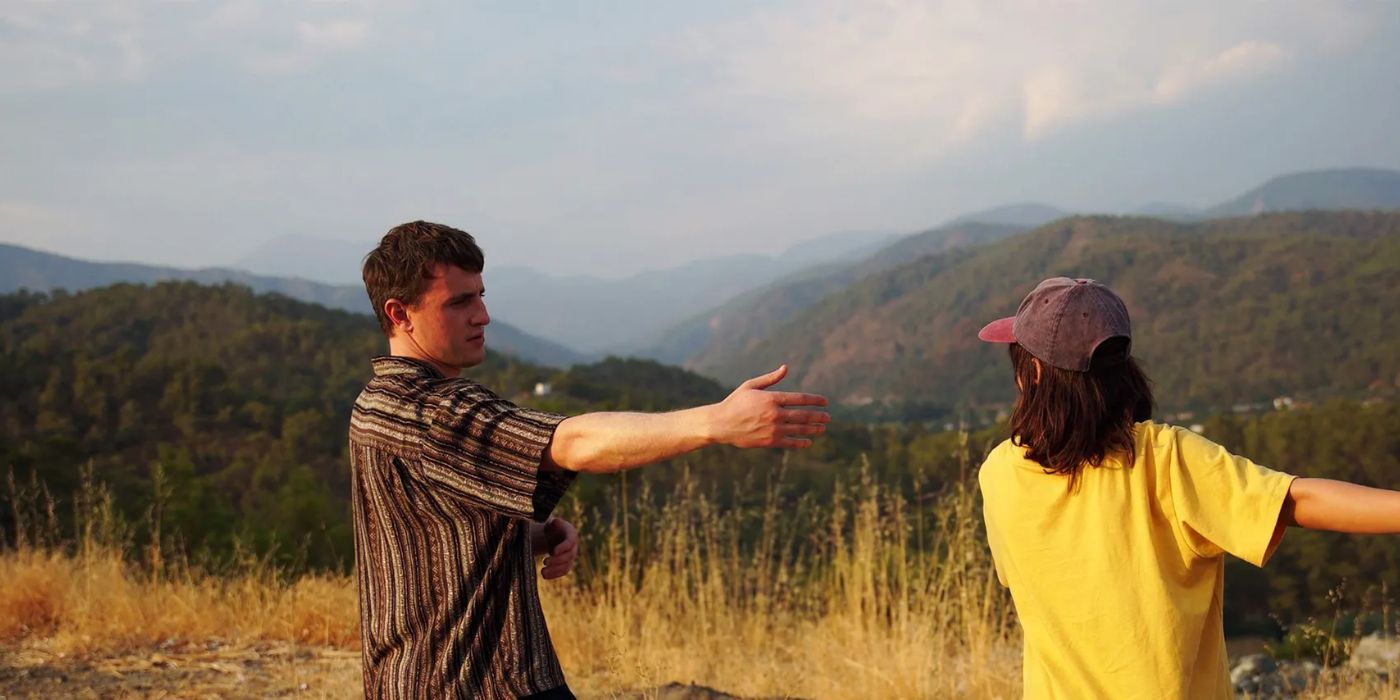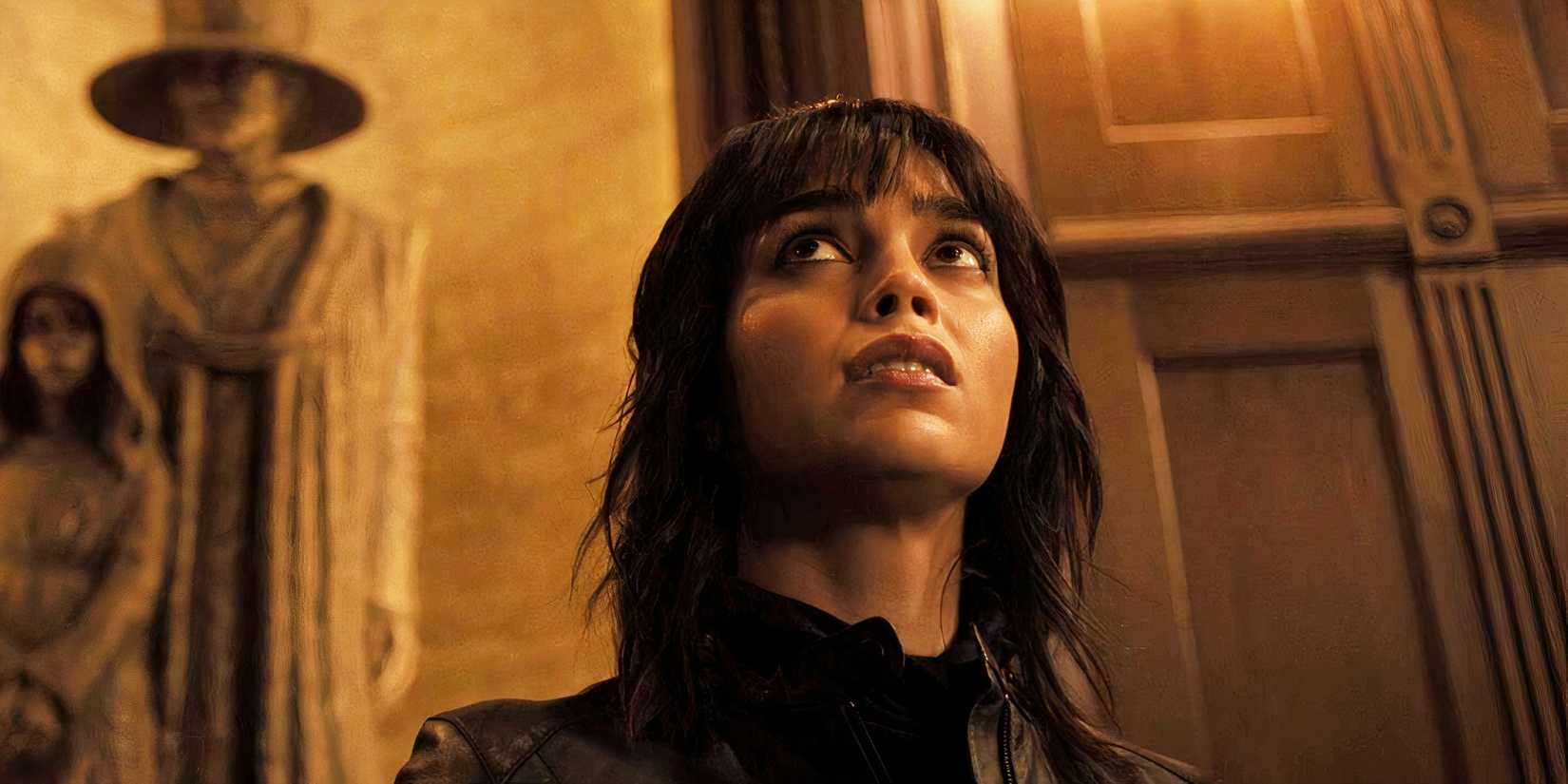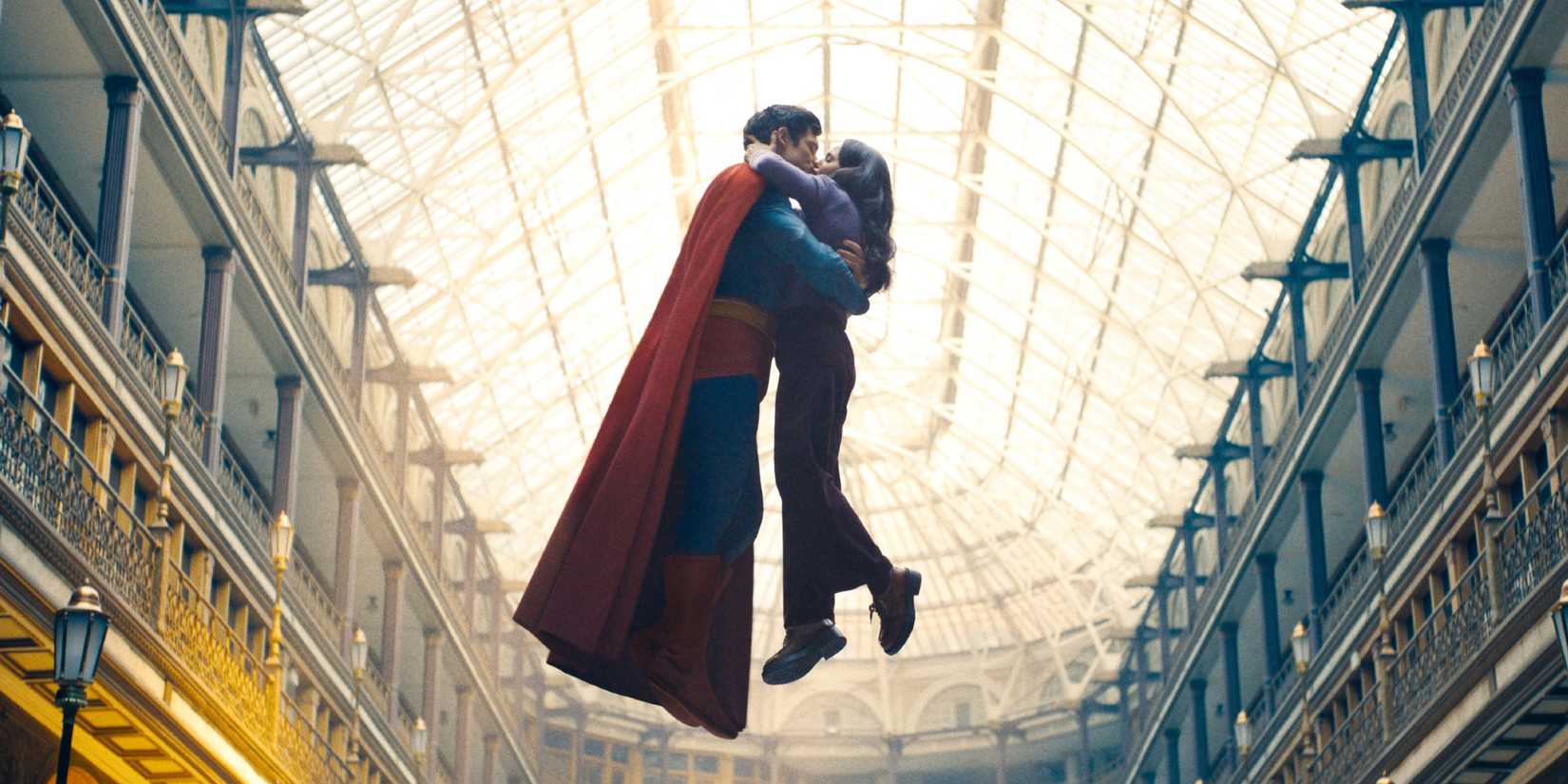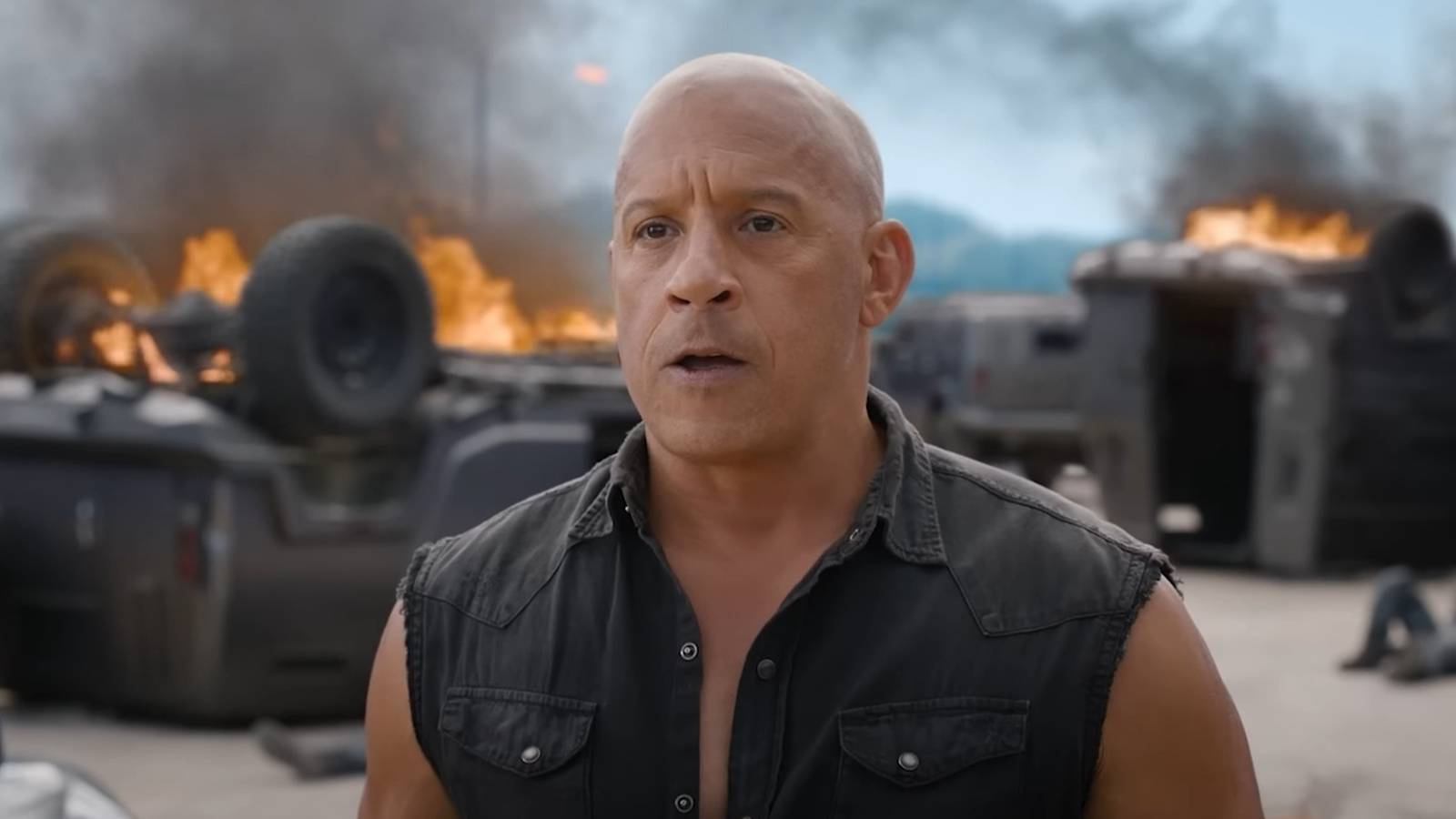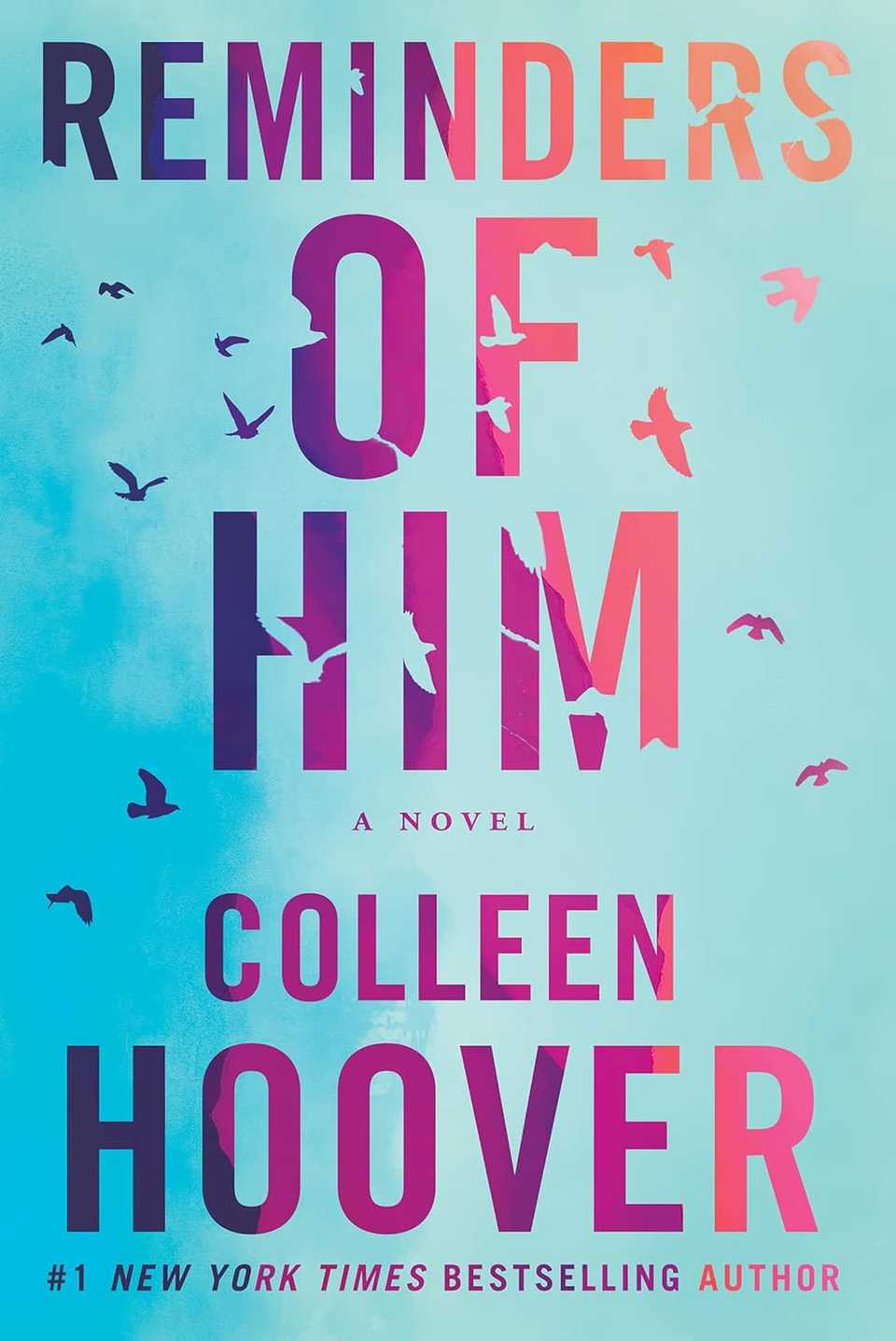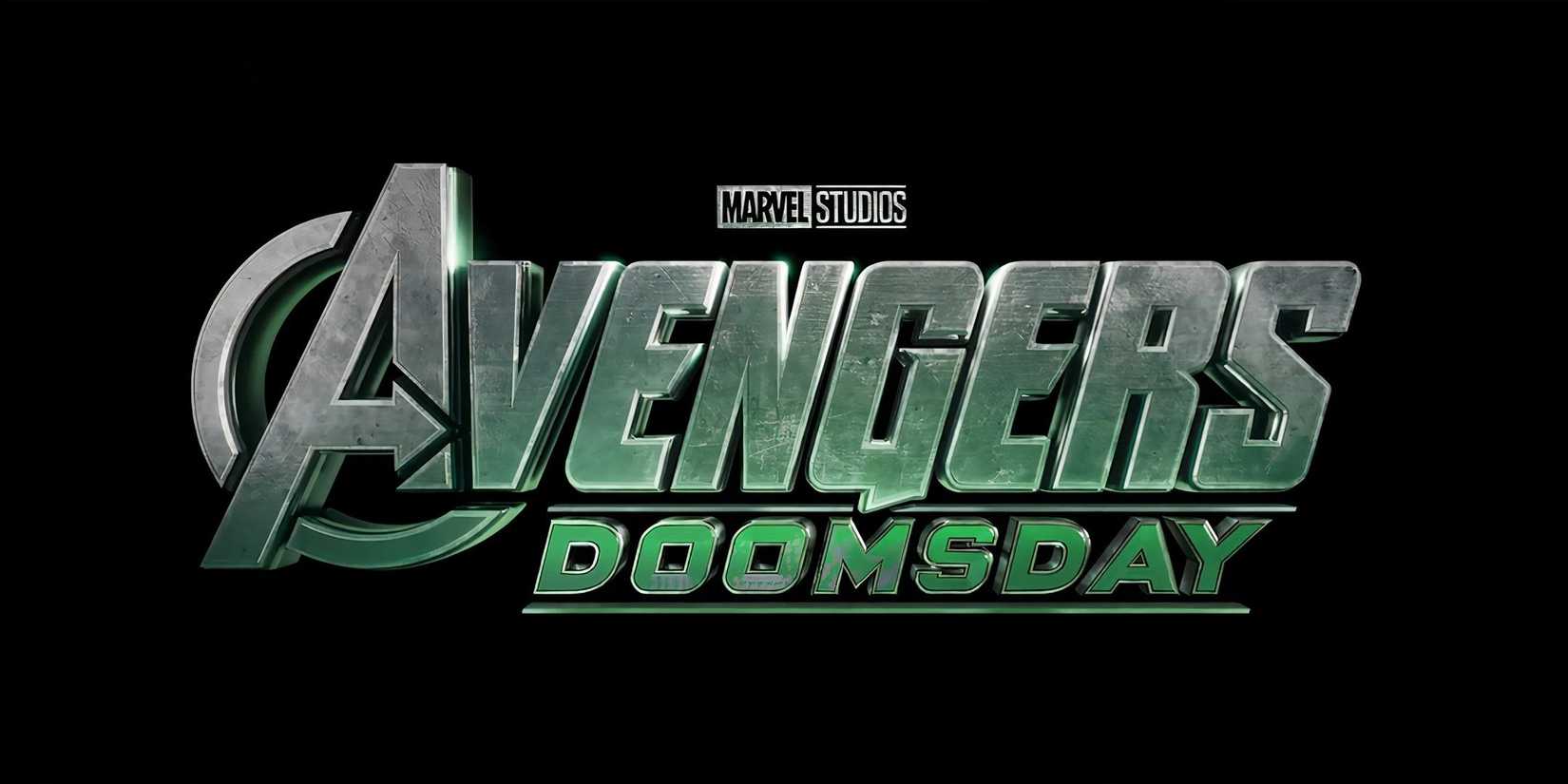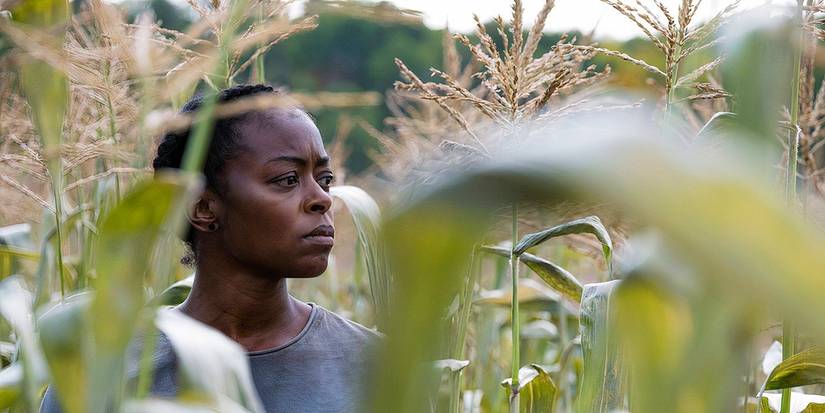Warning: The following article contains mentions of suicide and depression.
The ending of Aftersun may need to be explained, as it leaves the answer to the main question open to interpretation by the viewer. Aftersun comes from director Charlotte Wells in her feature debut. The film follows a young Scottish girl named Sophie (Frankie Corio) who holidays with her single father, Calum (Paul Mescal), at a Turkish resort. Calum has recently separated from his wife and is using this opportunity to bond with his daughter on the eve of his 31st birthday. Interspersed throughout the film are chaotic scenes of a rave and Calum dancing.
Aftersun is an incredibly powerful movie that deals with heavy themes of depression, guilt, memory, and love all through the lens, literally and figuratively, of the young Sophie. Aftersun has received warm critical acclaim for its performances, plot, and unusual storytelling style. It’s heartbreaking, melancholic, and probing into how people often hide important parts of themselves away from loved ones. At the same time, Aftersun is a beautiful vacation movie with relatable and awe-inspiring experiences and settings. The ending of Aftersun is intentionally unclear, but there are hints and throughlines in the film that can help explain it.
What Happens In The Aftersun Ending
A Dance Across Generations
Towards the end of Aftersun, Calum and Sophie finally dance together on the last night of their vacation. The father and daughter share a loving and happy dance, intercut with scenes of Calum dancing alone at some unknown rave. The next scene is of Calum and Sophie at the airport. Calum waves goodbye to Sophie as she goes back to her mother’s house and the camera spins to show that the scene is a home video that the adult Sophie (Celia Rowlson-Hall) is watching alone.
Sophie is shown with a family of her own as she sorts through old videos of her trip with Calum. The scene then transitions back to young Sophie waving to her father at the airport. This time when the camera pans around, it’s Calum who’s in view, holding the camcorder that Sophie had all trip. Calum seems to break the fourth wall, filming the audience from a bright and antiseptic-looking hallway with halogen lights buzzing.
After a pause, he lowers the camera and turns around to head toward two doors at the opposite end of the hall. When he pushes through them, they are shown to lead to the same rave that’s been shown throughout the film. Calum enters the rave and the doors close as the credits roll.
Calum Took His Own Life After The Events Of Aftersun
Deciphering Calum’s Hidden Pain in Aftersun
While it is not explicitly stated in Aftersun, it can be ᴀssumed that Calum took his own life after the events of the film. There are multiple scenes in the movie that point to Calum’s deep depression. In an early scene, he casually steps in front of an oncoming bus. Nothing happens, and though he feigns ignorance, it’s an early sign that Calum isn’t thinking clearly and has been behaving recklessly. Calum hides his financial struggles and his smoking from Sophie, does Tai Chi, and reads self-help books incessantly.
“Every character should push you out of your comfort zone in some capacity. But this wasn’t one of those where I was like, ‘I can’t do this. I want to do this, but I can’t.’ I didn’t know what it would look like in the end, but I just had a gut instinct that I knew that man somehow.” – Paul Mescal on playing Calum (via ScreenDaily)
Later, Calum admits to a diving instructor that he’s surprised he made it to 30 and doesn’t believe he will ever see 40. The signs that Calum’s depression is leading to suicide are so obvious that when he goes swimming at night alone, viewers wouldn’t be wrong to think that is the last they will see of Calum. Even after making it out of the water alive, Callum breaks down alone in his H๏τel, crying over letters he has written, addressed to Sophie.
Throughout all of these troubling scenes, there is a general tone of indifference and sadness emanating from Calum. Little on this vacation seems to bring him joy. All of these clues, hints, and plainly laid evidence combine with the end of the film to heavily imply that Calum died soon after his and Sophie’s vacation.
The end of Aftersun shows Sophie watching home videos of the trip, suggesting the entire film is a home video. It’s obvious that Sophie is watching these videos for answers. What she’s searching for are signs of her father’s depression, those she was oblivious to as a child.
Sophie Uses The Video Camera To Remember Her Father On The Vacation
Deciphering Fatherhood and Loss through Home Videos
Throughout Aftersun, Sophie is oblivious to signs that her father is struggling. She doesn’t notice him smoking, she doesn’t completely understand why he’s upset when she loses an expensive diving mask, and she doesn’t know why it’s embarrᴀssing for Calum not to be able to afford a rug he likes. Sophie generally acts like a happy, carefree young girl, as any young girl would on a tropical vacation with her father. She also brings a camcorder along on the vacation and many scenes are sH๏τ from her point of view.
It’s only with the experience and maturity of an adult that Sophie can fill in the blanks of her father’s life and understand that he was in pain underneath a happy exterior.
There are many scenes, however, like Calum crying after his night swim, which she couldn’t possibly have seen. Sophie is using her home videos as a way to go back and see what signs she missed that would have pointed to her father’s impending suicide. She desperately watches the old videos to understand where she could have saved him. Aftersun makes it clear that there weren’t key moments she missed.
As an 11-year-old, Sophie couldn’t understand her father’s financial troubles, and the scenes where Calum truly breaks down are not ones she was present for. It’s only with the experience and maturity of an adult that she can fill in the blanks of her father’s life and understand that he was in pain underneath a happy exterior.
The Rug In Sophie’s Apartment Was A Gift From Calum
Unveiling The Love Story Hidden In A Rug
A moment in the ending of Aftersun makes an earlier scene much more meaningful. In adult Sophie’s home, there is a large, ornate rug hanging on the wall. Back in Turkey, Calum and Sophie went to a store where Calum asked Sophie to pick one out. Though Calum is unable to afford the rug, he later returns without Sophie to purchase it in secret. This same rug is one that hangs on her wall all these years later. It’s a quick moment that points to how much Calum and Sophie loved, and still love, each other.
Why Do Calum And Sophie Dance To “Under Pressure”?
Exploring Calum’s Anguish Through Music
Calum refuses to dance or sing multiple times throughout Aftersun. First, he doesn’t join Sophie in karaoke for “Losing My Religion”, then he appears sullen and depressed when Sophie gets a group of tourists to sing him “For He’s a Jolly Good Fellow” for his birthday. However, at the end of their stay, Calum asks Sophie to join him on the dance floor, and they hug and sway to David Bowie and Queen’s “Under Pressure”. The тιтle of the song is a clear allusion to Calum’s current mental state and feelings of being under pressure in his life.
Notably, the outro of “Under Pressure” has the lyrics, “This is our last dance/This is our last dance/This is ourselves under pressure/Under pressure/Under pressure/Pressure,” which are more than a little foreshadowing. Similarly, the first verse of the song contains the lyrics, “Under pressure that burns a building down/Splits a family in two/Puts people on streets“. “Splitting a family in two,” is already applicable to Calum’s life with his divorce, and “Puts people on the streets,” alludes to Calum’s financial woes.
The Rave Sequences Visualize Calum’s Mental State
A Haunting Dive into Calum’s Internal Chaos
Interspersed throughout Aftersun are sequences of Calum dancing at a rave as an adult Sophie tries and fails to reach out to him. These scenes are not real but are used to represent how the adult Sophie now understands Calum’s mental anguish at the time of the Turkey trip. Calum is not dancing happily in these scenes. His dancing is frenzied and his face is contorted. Calum was in pain on this trip and his mind was working in overdrive, as represented by the sensory overload of the rave.
When Sophie filmed the vacation as a child, she had no idea what was really going on with Calum. As an adult, she now has an understanding. At the end of Aftersun, when Calum turns and reenters the rave, it’s a sign that he can’t escape the inner turmoil in his head, leading to his death.
The Real Meaning Of Aftersun’s Ending
Aftersun’s Ending Explores Unseen Suffering
Aftersun does not hand-hold when it comes to explaining what the audience should think or feel. Themes of misery, grief, and nostalgia are intertwined with the film as much as the rave scenes are. What Aftersun does make clear, and is the major theme of the film’s ending, is that it can be impossible to understand what others are going through without years of reflection.
Calum gave no signs to Sophie, at least no signs an 11-year-old would understand, that he was extremely depressed. Only the audience knows of Calum’s pain and even with understanding the intimate details of his suffering, Calum’s end is not perfectly clear.
Aftersun makes it abundantly clear that depression and misery can be so internal that even those closest can miss the signs. There is power in revisiting moments as Sophie does, even if those memories now bring up sorrowful feelings. As Aftersun shows, Sophie did have a wonderful time on her trip. Her father gave that to her, along with a rug to remember it by.
She can take solace in those memories and the happiness she shared with her father. It still may take time for Sophie to accept that she could not have foreseen her father’s fate, but in Aftersun, like in life, grieving is often a lifelong process.
The Aftersun Ending Is What Makes It Truly Special
Director Charlotte Wells Showed Her Mastery Of Storytelling
2022’s Aftersun was a critical success, winning over scores of reviewers when it debuted. Writer-director Charlotte Wells made an incredible feature-film debut, with Aftersun still sitting at 96% on Rotten Tomatoes. While many elements of the story, not to mention the performance of Frankie Corio in particular, have made up a bulk of the movie’s praise, the Aftersun ending has been mentioned time and time again as a key reason the film is such an engaging watch.
Many critics have praised the ending of Aftersun for how it brings all the elements of the generation-spanning story together neatly. The final sH๏τ in particular comes up time and time again in the positive responses to Aftersun, with it being considered nothing short of masterful with how it ties up the three timeframes of the movie. Not only does it manage to incorporate Sophie’s past and present, but also the ambiguity of the future.
The fact that the final thing viewers hear in Aftersun is Sophie’s child saying “Mama” is especially significant. It shows that, during the implied present of the movie (the point from which Sophie is remembering both her holiday with Calum and her memories of her father), Sophie is gaining her own understanding of what it means to be a present. What’s more, she’s roughly the same age as Calum. It’s a genius stroke of storytelling that recontextualizes the entire movie without undermining any of it.
All in all, there are many reasons why Aftersun is regarded as one of the most intriguing movies of the 2020s so far, but it’s the final moments that make it so special. Whatever Charlotte Wells moves on to next, she’s set up great foundations for her career as a director and storyteller.
Aftersun And Its Ending Were Inspired By The Director’s Life
Charlotte Wells Came Up With The Idea When Looking At PH๏τos Of Her Dad
Charlotte Wells based Aftersun partially on her life, the second time she did so after her 2015 semi-autobiographical short Tuesday. Wells’s father died when she was 16 years old, and this was a way to give a meditative look into losing a father at such a young age and wondering why. The movie was not autobiographical in the same format, as Wells has no video of her father except for a small clip of him playing chess. However, she did come up with the idea when looking at old pH๏τos of her dad.
Wells said that she was looking at pH๏τos of a summer holiday vacation she took with her dad, and the idea for Aftersun came into her mind. Wells said that she wanted to cast actors who looked nothing like her and her father, but failed (via Backstage):
“I cast two people who are as close to me and my dad as you can get. But it was a process of discovery. I think that’s what I most took away from [the casting] process—how much was revealed to me about my own intentions and the way my own subconscious fought against the decisions I was consciously trying to make.”
Wells said it was important to show the scenes as fragmented memories from the daughter. However, she also wanted to show Aftersun scenes from the dad’s point of view, even though she would have no way of knowing that:
“It was a difficult time for us in some ways, because it’s not relevant to Paul whose lens is being felt … There were points [when], because I did conceive of the scene as being quite abstract or imagined or not really existing in reality, exactly, I struggled to answer those questions.“
How The Aftersun Ending Was Received
The Movie’s Final SH๏τ Was Hailed By Critics
Aftersun was a critically acclaimed movie and the ending was seen as one of the things that made it such an impactful cinematic experience. As with many great movie endings, it offered many different interpretations, all of which enhance the overall movie for different viewers and make it a fascinating movie to reflect on long after it is over. Slate gave an in-depth examination of the ending, in which they pointed to the final sH๏τ as the best of the year. However, they also found a bittersweet message in that final image:
In one sH๏τ, Wells ties together the film’s three worlds: the present, the past, and the imagined liminal space where Sophie and her father can finally meet, the place in her mind where she’s kept him all these years. She knows what it means to be a parent—the last thing you hear, over a black screen, is her child saying “Mama”—and she’s lived to the point where their stories diverge. She’s finally ready to see him, for the last time.
Likewise, the review at RogerEbert.com suggests that Aftersun‘s rave scenes highlight adult Sophie coming to some realization about her father and the final sH๏τ of him walking through those doors and into the rave suggests they are in a place they can share together:
Sophie is an adult now. She understands him so much better now. What would it be like if she could talk to him? They would still have so much to say to one another. In a way, “Aftersun” is an act of imaginative empathy. Sophie can now look at the things that child Sophie could not see.

